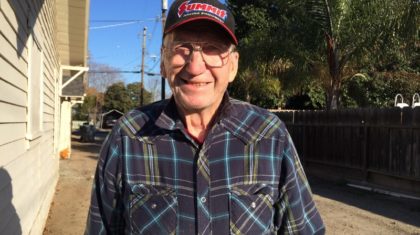
By Phil Goff, LEED AP, Senior Associate, Alta Planning + Design
While much focus has been placed on mid-sized, bicycle friendly cities such as Portland, Denver, Salt Lake City, and Pittsburgh, Buffalo has also emerged as a national leader in bicycle-friendly programs and infrastructure. All-but-dismissed as a struggling Rust Belt city for decades, recent policies and funding opportunities have led to significant revitalization in Buffalo. This has recently culminated with the completion of the Buffalo Bike Plan and the initiation of the final design and public outreach for a three-mile roadway reconstruction that will feature the city’s first two-way separated bike lane (AKA cycle track). Alta is proud to be the authors of the Bike Plan and a key member of the Niagara Street design team.

Over the past ten years, Buffalo has emerged as a bronze-level Bicycle Friendly Community, due to the strong support of Mayor Byron W. Brown, a Complete Streets policy, an extremely effective advocacy group (Gobike Buffalo), and a network of 80 miles of greenways, bike lanes, and bike routes with shared lane markings. Despite this progress, the emerging network was developed somewhat haphazardly without the benefit of a larger master plan to guide the network’s growth. The 2016 Bike Plan has provided the City with a blueprint for a well-connected network comprised of dozens of on- and off-street improvements including:
- An expanded greenway and rail-trail system
- Cycle tracks on four of the city’s most critical corridors to promote bicycling for all ages and abilities
- Numerous “road diet” projects with bike lanes on former four-lane roads build originally to handle traffic when Buffalo’s population was twice the number it is today
- Neighborhood bikeways on low volume, residential streets
- Where few options exist for striped bike lanes, shared lane markings and signage to enhance the comfort level for experienced bicyclists accustomed to riding with motor vehicle traffic
- A maintenance plan intended to encourage cycling year round (a huge task, given Buffalo famously snowy winters!)
The Buffalo Bike Plan incorporated evaluation criteria to score the various projects and determine the eleven designated “catalyst projects”. The catalyst projects include a range of facility types and promote system equity, as they are spread evenly throughout the city, including the impoverished neighborhoods on the East Side.
One of the catalyst projects that has already received funding is the Niagara Street corridor. Niagara is one of Buffalo’s most-significant streets connecting downtown to the Peace Bridge to Canada and beyond, towards Niagara Falls. Having been superseded by the construction of I-190, the unnecessarily-wide four/five lane roadway contains light traffic, but with very high speeds. This creates a barrier to the Niagara River from the multi-ethnic neighborhoods along Buffalo’s West Side.

The current planning process envisions Niagara Street as a community connector with two lanes of traffic, turn lanes, wider sidewalks, stormwater management features and a separated bicycle facility from end to end. Alta is working with Watts Engineering and Stoss Landscape Architects to create a streetscape worthy of a city with a legacy of parks and boulevards designed by the renowned Frederick Law Olmsted.
When Niagara Street is completed in 2018, the two-way cycle track is likely to herald the development of other cycle tracks consistent with the Bike Plan’s designated network. This includes a traffic reconfiguration of Main Street from downtown to the University of Buffalo South Campus that will reduce the road to three lanes of traffic and a two-way cycle track. Along this three-mile, bicycle trunk route are designated perpendicular bikeways that will improve connections to local business districts, historic neighborhoods, schools, universities and parks.

The coming years will continue Buffalo’s trajectory as an emerging Rust Belt city banking on its investments in livability to attract new businesses and residents at a level not seen since the 1950’s. It is exciting to see bicycling play a major role in Buffalo’s renaissance, and those of us involved in the planning effort look forward to doing what we can to make the city one of the best winter-bicycling cities in North America.

Note: Thanks to all of those who participated on the Steering Committee and those who attended the public meetings in Buffalo. Special thanks to the City of Buffalo and the New York State Environmental Research and Development Authority (NYSERDA) for providing the project funding.


